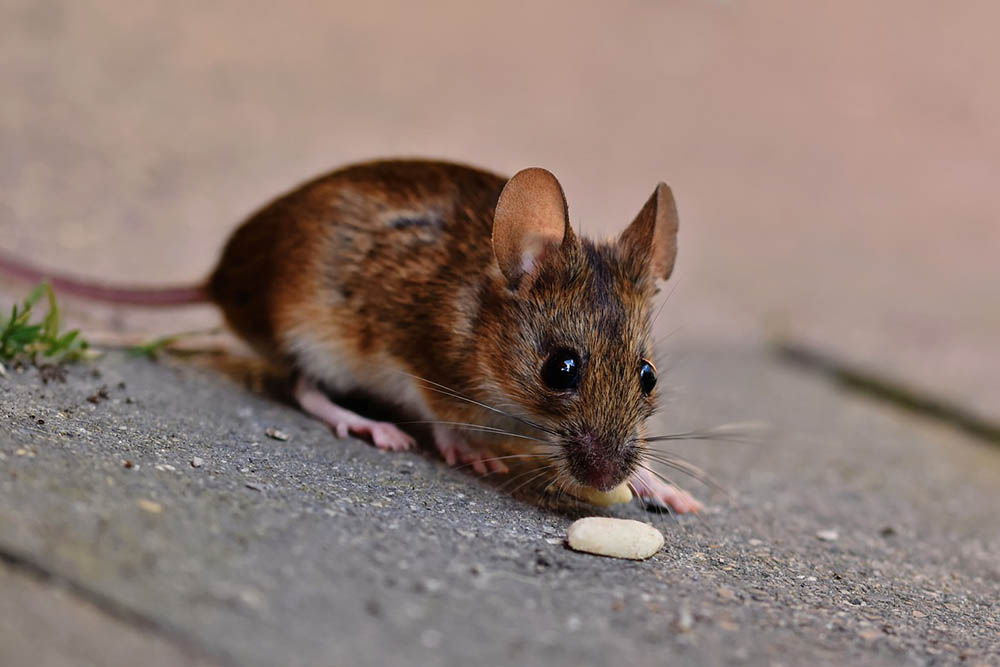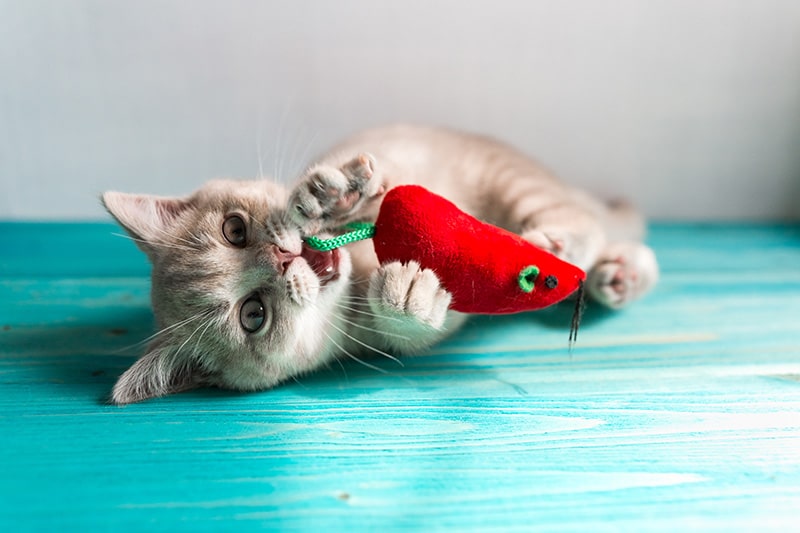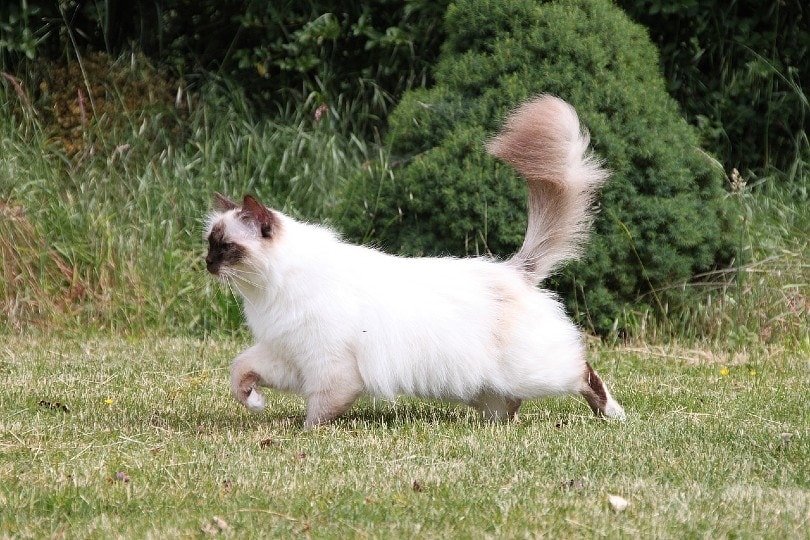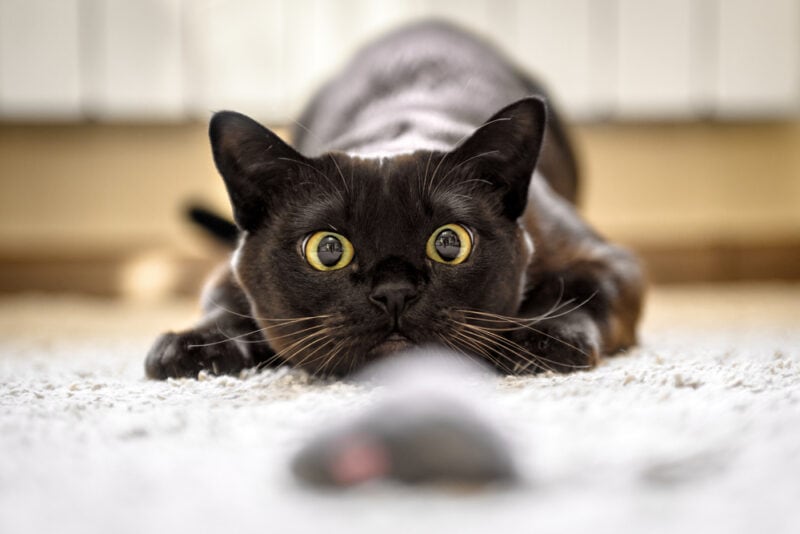Cats are born hunters, and it’s natural for them to pursue and catch prey such as mice. If your cat just consumed a mouse, you may be wondering if you need to be concerned. What if your buddy ate a mouse that was poisoned? Cats can eat mice, and they often do when given access to the outdoors.
If your cat has eaten one mouse that you suspect may have been poisoned, there’s likely little to worry about; cats must consume several poisoned rodents to become sick from rodenticide exposure. This type of poisoning is called secondary or relay poisoning and is more common in cats that subsist on a diet of rodents, namely outdoor cats with access to several mice in areas where rodent-killing chemicals are commonly used.
What Are the Diseases Carried by Mice?

Like all mammals, mice often carry parasites. When a cat consumes a mouse, they can become infected with these parasites.
- Toxoplasma gondii – This is a microscopic parasite that is shed in the feces of infected cats. It can pose a health threat to humans, especially to pregnant women and their unborn babies and those with weakened immune systems. It is recommended that pregnant women and those with weakened immune systems do not handle cat feces, e.g., cleaning out litter trays.
- Roundworms – Toxascaris leonina and Toxocara cati are the most common species of roundworm found in cats. They can be contracted by cats when eating rodents that have been infected. Again these parasites can infect humans, and although rare, can be harmful, especially to young children.
- Tapeworm – Cats usually become infected with tapeworms by ingesting infected fleas while grooming or by eating infected rodents. Fleas and rodents become infected by eating tapeworm eggs in the environment. If tapeworm segments are ingested by humans (through accidental ingestion of cat feces), they can cause infection, but good hygiene prevents this.
Mice can also carry bacterial infections that can pass onto cats that predate them.
- Yersinia pestis is the bacteria responsible for the plague. It is transmitted primarily through the fleas of rats and other rodents. Cats are usually exposed to the bacteria by oral contact with the tissue of an infected rodent, e.g., eating a mouse or from the bite of an infected flea.
- Francisella tularensis is a bacteria that is found most commonly in rabbits and rodents in the USA. It survives within the host organism by creating tumor-like masses within the liver. Infection with this bacteria is uncommon in cats, but they can become infected if they eat an infected rabbit or rodent. The disease caused is known as Tularemia. The signs of Tularemia include a high fever, jaundice (yellowing of the skin and whites of the eyes), and stomach pain. This infection is zoonotic, meaning it can be passed from cats to humans, and it is a reportable disease in the USA.
Yersinia pestis and Francisella tularensis infections can be serious and require immediate evaluation and treatment. Cats that regularly play outdoors often benefit from regular deworming, as it can be difficult to tell if a cat has a parasitic infection based on physical signs alone.
Why Do Indoor Cats Kill and Eat Mice?
It’s instinctual. Mice and other small mammals are part of a cat’s natural diet, and they have never had a good reason to get rid of their natural tendency to chase small creatures. The cat’s mouse-catching prowess is largely what brought people and cats together in the first place!

How Can I Discourage My Cat From Giving Me Dead Mice as Gifts?
It’s common for cats with access to the outdoors to bring home dead rodents for humans to find. No one is quite sure why cats engage in this sort of behavior, but there are a number of theories.
- Cats that are fed a well-balanced diet are less likely to kill and eat their prey. They are more likely to play with it and may kill it in the process, but this might be left as a “gift” for you.
- A cat’s opportunistic nature means that if a second opportunity to catch prey arises soon after a successful kill, they will engage, even if they aren’t hungry. If they aren’t hungry, they are likely to leave the prey for you to find rather than eat it.
So, how can we use that information to reduce the number of dead mice on your doorstep?
Limit Outdoor Access
Cats with regular outdoor access have more chances to catch prey, such as birds and mice. Keeping pets indoors at dawn and dusk when prey species are most active can go a long way toward minimizing the number of birds and small mammals they kill, bring home, or consume.
Catios provide cats with a safe, enclosed area where they can enjoy the sights and sounds of the local birds and squirrels while at the same time limiting their ability to prey on them. However, some cats find being unable to carry out their natural hunting behaviors stressful, so it is important to ensure your cat isn’t showing any signs of stress, e.g., inappropriate toileting, cystitis, or over-grooming. Speak to your vet if you are concerned your cat is suffering from any stress-related problems.

Provide Lots of Toys
Giving your cat several toys to play with and engaging in short but frequent play sessions with toys that closely resemble natural prey animals may provide an alternative outlet for your cat’s natural predatory drive. You can play with wand toys to stimulate their hunting instincts, and they can enjoy the thrill of the chase without tormenting small rodents.
Importance of Diet
Provide a high-quality, well-balanced diet to reduce the hunger drive to hunt. Cats enjoy variety in their diets, so add in new foods now and then if possible. Feeding small meals throughout the day and night mimics the cat’s natural feeding pattern. Timed feeders can be helpful with this.
Conclusion
While watching your cat devour a mouse may not be pleasant, there’s probably no reason to panic. Rodents are part of a cat’s natural diet, so it makes sense for them to pursue and eat them. If your cat has eaten a rodent that you suspect died from poison ingestion, there are unlikely to be any complications, but you can always call your vet to have a discussion with them about the number of mice eaten and the type of poison they might have had for peace of mind.
Secondary rodenticide poisoning is extremely rare in cats that seldom eat mice and is more likely seen in cats that hunt for all their food, i.e., feral or farm cats. While mice are part of the natural feline diet, they are also a significant source of parasites and, less commonly, bacteria that can cause health complications. If your cat is a frequent mouse eater, it is very important that they are wormed monthly with a robust and effective anti-parasite medication. Make sure you speak to your veterinarian to ensure your cat is covered appropriately.
Featured Image Credit: Viacheslav Lopatin, Shutterstock













